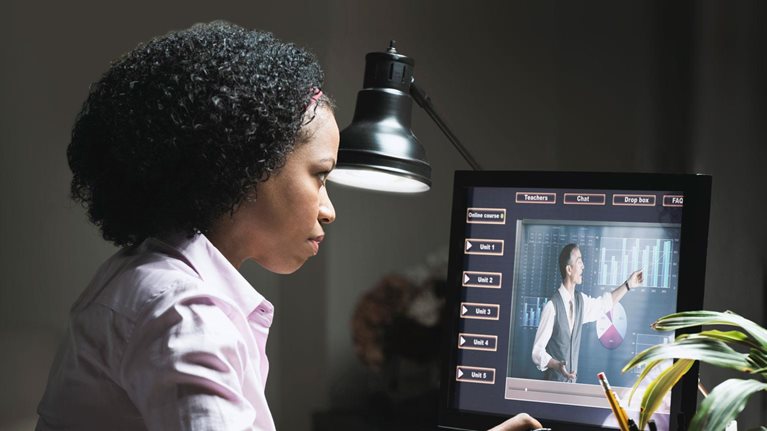In the wake of 9/11, SARS, natural disasters, and campus violence, many American universities set up emergency-response teams to prepare for the unexpected. The emergence of the COVID-19 pandemic has revealed the limits of these efforts. Although universities were at the forefront of some of the most proactive responses to the virus—quick to empty dorms and move classes online—the process was challenging, and many are still scrambling.
Coping with COVID-19 is particularly complicated for universities, because they serve such a wide variety of functions. First and foremost, they are educational institutions, where undergraduate and postgraduate students learn and where faculty teach and conduct research. In addition, they function as small cities, complete with police forces, energy plants, sports facilities, and other civic institutions. They are also major local employers and important drivers of local and regional economies. Finally, many operate hospitals, placing them at the front line of the local healthcare system.
These disparate identities mean that universities have a large number of stakeholders. And US universities also have a complicated revenue model—tuition, government grants, alumni donations, endowment revenue, and even ticket sales and television contracts. Coming to grips with something like COVID-19, then, was never going to be easy.
Even though most students have left campus, the problems wrought by COVID-19 have not. Employees—from faculty to facilities staff—are worried about their future. Research projects are in limbo. Admissions and faculty recruitment are unsettled. And students have urgent questions: How will academic credit be determined? Will I get reimbursed for unused room and board? Will there be a commencement ceremony? How will this affect my athletic scholarship? Can I even stay in the country if my student visa is revoked? In short, universities still have many decisions to make, and to communicate.
Creating an organization that provides a framework to these decisions can help—and is better done sooner rather than later. In working with higher-education institutions as well as businesses and public-sector agencies, we have seen how integrated nerve centers can help these organizations to set a course and follow through.
In this article, we explain what a nerve center is, how it could help, and the most important questions American universities should bear in mind as they navigate the COVID-19 pandemic. The goal is to create an organization that can ensure safety and keep essential operations going, while establishing more effective and strategic decision-making systems for the future.
Characteristics of an integrated nerve center
Integrated nerve centers are a special kind of organization that go into action when institutions must respond to major, fast-moving, and disruptive crises. Coronavirus qualifies on all counts.
An integrated nerve center is a simple, flexible, multidisciplinary construct that is designed to adapt to fast-changing conditions. In broad terms, it takes four kinds of actions:
- Discover. Form an accurate view of the situation and how it is changing, while integrating the latest epidemiological, economic, and political information. Seek input from senior leaders, students, faculty, staff, parents, alumni, and other stakeholders.
- Decide what to do, quickly, while ensuring adequate stress-testing of hypotheses and adherence to university and community values. Do not wait until all the facts are in—they may never be—to act. In a crisis, good now is better than perfect later.
- Design a portfolio of actions, immediate and strategic, that minimizes false optimism, maximizes speed, and installs a pragmatic operating model. Be ready to change timelines and budgets as circumstances change.
- Deliver solutions in a disciplined, efficient way. Remember that small failures can lead to bigger ones, so stay flexible.
The overall goal is for the institution to be capable of getting ahead of events, and to react skillfully and strategically.
Nerve centers are organized around work teams that have specific areas of responsibility. An integration team, headed by a senior leader, coordinates the actions of the rest to ensure that the work teams do not trip over each other and that they get the resources they need. The integration team should be kept small, including members who bring strengths in project management, decision making, scenario planning, communications, and campus culture. The trust of senior leadership is essential. Given the pandemic, a COVID-19 nerve center should also ensure it is informed by the latest epidemiological expertise. Because no two universities are alike, neither will any two nerve centers be. All of them, however, will need to have work teams that address health and safety, student experience, teaching and research, faculty and staff, campus operations, finance and legal, and communications (exhibit). Nerve centers may also create temporary teams assigned to bring critical items to closure (for instance, incident management and the acquisition of personal protective equipment).

In times of crisis, leaders may be tempted to centralize decision making and to keep tight control of information. They should think twice. Leadership from the top is essential, but not nearly enough: one or two or even half a dozen leaders cannot know enough, fast enough, to make all the necessary decisions in these circumstances. Conversely, a proliferation of subteams with joint ownership will not lead to fast-enough results. Universities, which are often known for seeking consensus and sharing decision making, might find this especially difficult. Nerve centers are a way to widen and hasten decision making, while setting appropriate boundaries and enforcing accountability. They set priorities and give others the authority to act—indeed, to do so on incomplete information. Constant communication is critical, with daily meetings ensuring consistency across the workstreams.
Tactically, operationalizing a nerve center means assigning a senior sponsor and leader to each workstream, and then launching a regular cadence of interaction between the nerve center and the workstreams. Select meeting attendees with care; if meetings are kept to only the senior sponsors and the nerve center, they often result in purely upward reporting rather than constructive debate and real problem solving. If meetings involve too many frontline managers within the workstreams, they may become overly tactical. The right mix is often the senior sponsor and leader of each stream, along with the nerve-center head and integration team.
While the exact cadence will vary by university, we recommend holding daily huddles at a regular, set time (typically first thing in the morning) to focus on key decisions that need to be made that day, outputs for the day, and other priorities for the week. These daily touchpoints can be run virtually, with a project manager capturing each of the priorities and using the exact same document and agenda every day to foment tight coordination, communication, and collaboration. At the end of each day, the nerve-center leader should prepare a concise briefing to communicate the highlights of the day and to escalate key decisions that have not yet been resolved to the president and senior-leadership team.
Principles to guide decision making for a university nerve center
Much of the discussion so far applies widely—to private-sector organizations, governments, and higher-education institutions alike. But because universities have unique characteristics, four additional guiding principles should inform how they use the nerve center and make decisions.
Bring an equity lens to every decision. Many of the actions universities take to slow the spread of the virus and safeguard health will likely have a disproportionate effect on already vulnerable populations. For example, lower-income students may not have the devices or internet speed at home to get set up for online coursework. They are also more likely to depend on campus employment for living expenses. For students who were struggling academically, the transition to online learning could be incredibly disruptive and threaten completion. Some international students may not be able to get home, and if they do, may not have access to the internet; others may not be able to stay in the country given visa and work-authorization rules. Some students may have no home to go to.
In terms of the staff, many of those who provide the operational backbone of the campus—everyone from faculty to janitors and food-service workers—may lack a financial cushion if they are laid off or go unpaid during campus closure. Local vendors may depend on university business. Universities have their own financial concerns, but to the extent possible, they must nevertheless incorporate a sense of equity—favoring the more vulnerable over the more affluent—into how they make decisions.
Stay in close touch with students, faculty, and alumni. As COVID-19 spread, universities had to act quickly, focusing largely on health and safety. As the consequences linger on, universities need to understand the concerns of their students and other stakeholders—and then respond effectively. Both academic and nonacademic concerns are important; for example, plans for commencement and for supporting graduating seniors as they enter an uncertain employment market. Part of this effort needs to be directed at supporting the mental health of students and faculty who are now spread out, and possibly dealing with loss, shock, isolation, and difficult family situations. Engagement doesn’t stop with current students. Alumni will be critical to bouncing back from the financial stress of the outbreak. If there is a recession, alumni donations might falter, but an “early and often” approach to alumni communication might pay dividends down the road—both financial and nonfinancial.
Think beyond your walls. No university is alone in coping with COVID-19. Peer institutions are grappling with the same issues at the same time. This represents a unique opportunity to learn from each other in real time, and to collaborate. One example might be to create educational partnerships, such as small colleges banding together to provide online learning, or piggy-backing off a larger institution’s capabilities. There may also be a way to create strategic partnerships—joining together to advocate certain policies or to coordinate communications or workforce initiatives. This is a time for universities to embrace the idea of being peers in a common educational mission—not just as competitors for students and staff and for athletic glory. Finally, it is important to remember the role of the university in the broader community. As campuses go quiet, universities are sitting on physical assets that could prove critical in helping local governments and healthcare workers respond.
Act with urgency, but with perspective. The immediate focus will of course be safety and operations, and with good reason. But it is important not to stop there. While the immediate issues can easily consume senior-leadership bandwidth, equally important to the success of the response will be longer-term planning for recovery.
There are two elements to bringing in a longer-term view to decision making. First, institute in-depth scenario planning around what different epidemiological outcomes would mean for the resumption of in-person classes—and the subsequent implications for teaching, enrollment, faculty, staff, operations, and infrastructure. Nerve centers can act as a catalyst for long-term planning by driving scenario-planning exercises with senior leaders and by encouraging workstreams to map out what decisions need to be made in the next 15 days, 30 days, 60 days, and 90 days.
Second, there needs to be a way to reflect on how the COVID-19 crisis could and should change how universities operate in the future. A crisis can provide an opportunity to think anew—perhaps to reassess elements of the student experience, admissions, graduation requirements, testing, and more.
To the four “Ds” above (discover, decide, design, and deliver), we would add one more that nerve centers need to embrace: doubt. Regularly evaluate ongoing and potential actions in the light of new information and decide whether plans need to be modified, adopted, or ditched. Learning from the past is important—as universities certainly know. But it’s just as important to be willing to accept new insights, even when they contradict previous ones. Encouraging a healthy dash of doubt makes these habits of mind a routine part of the decision-making process.
Nerve centers, and the organizations they serve, require strong leadership and steady direction. The senior leader must create a sense of purpose to unify work teams and set priorities. Perhaps most important is to demonstrate the personal characteristics that can guide an institution through the storm.
Responding to COVD-19 will require American universities to balance many things: short-term needs with the long-term future, the role of the university itself with that of the broader community, finances with equity, and the need to be decisive with the desire to be collegial.
This is delicate work. The universities who manage to do it, however, with the assistance of a well-run nerve center, will find that when the crisis has passed, they will be ready to face the future.
This is the first in a series of articles on COVID-19 and higher education.


